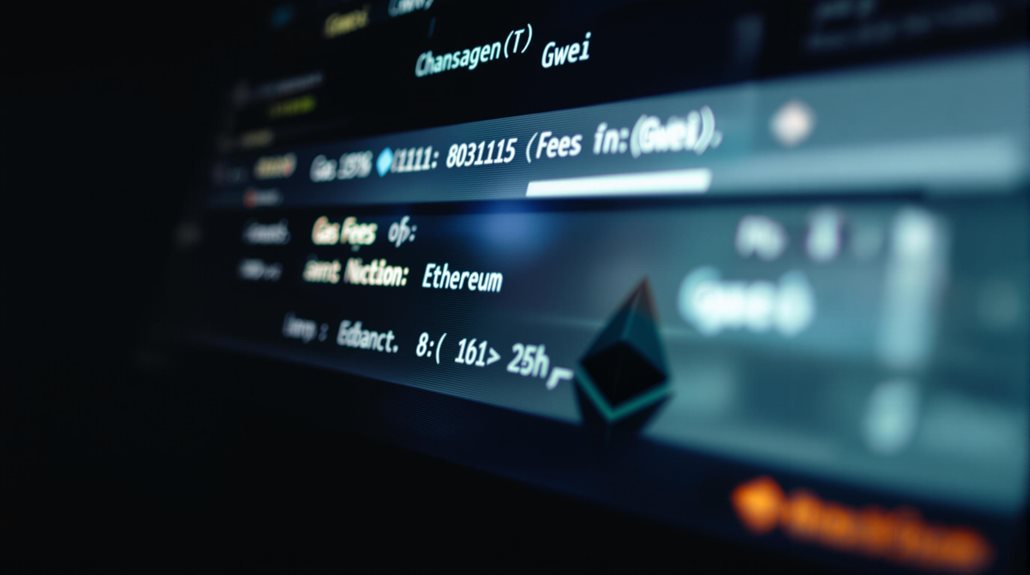Gwei is a tiny fraction of Ethereum (ETH) cryptocurrency, equal to one billionth (0.000000001) of one ETH. It's named after Claude Shannon, who pioneered information theory. Gwei works like cents to dollars but for crypto transactions, helping users calculate gas fees on the Ethereum network. These fees vary based on network traffic, with busier times requiring higher Gwei payments. Understanding Gwei is key to grasping how Ethereum's transaction costs work.

The digital currency world has its own unique measurements, and Gwei is one of its most significant units. Named after Claude Shannon, who's known as the father of information theory, Gwei represents the smallest unit of Ethereum (ETH) that's commonly used. One Gwei equals 0.000000001 ETH, or one billionth of an Ethereum token. The term comes from combining "giga" and "wei," making it easier to talk about tiny fractions of ETH.
When people make transactions on the Ethereum network, they need to pay fees called gas fees. These fees are typically expressed in Gwei because it's more practical than using the full ETH amount. It's similar to how we might use cents instead of dollars for small purchases. The Gwei system helps users understand exactly how much they're paying for their transactions. These fees are essential as they compensate validators for maintaining the network.
During busy times on the Ethereum network, users often need to pay higher gas fees to get their transactions processed quickly. These fees are always shown in Gwei, and they change based on how congested the network is. When lots of people are using the network at once, the Gwei price goes up. Users can set limits on how much Gwei they're willing to pay for their transactions. Smart contract transactions typically require more gas fees than simple token transfers.
The relationship between ETH and Gwei is part of a larger system. One ETH equals one billion Gwei, which in turn equals one quintillion Wei (an even smaller unit). This precise system allows for very detailed calculations of transaction costs. The actual value of Gwei in regular currency changes as the market price of ETH goes up and down.
The Ethereum network uses a formula to calculate transaction fees: Gas Limit multiplied by Gas Price (in Gwei) equals the total Transaction Fee. This system creates a clear and transparent way for users to understand what they're paying. It's a vital part of how Ethereum's economy works, making sure that resources on the network are used efficiently.
Gwei plays a pivotal role in making the Ethereum network accessible for all kinds of transactions, from large transfers to tiny micropayments. Its precise nature allows for exact calculations of network costs, while its simplified expression makes it easier for everyday users to understand transaction fees. This balance between precision and usability has made Gwei an integral part of the Ethereum ecosystem.
Frequently Asked Questions
How Do I Calculate the Optimal Gwei Amount for My Transactions?
To find the ideal Gwei amount, users can check gas tracking websites like ETH Gas Station to see current network rates.
They'll need to add up the base fee (set by the network) and priority fee (what they're willing to pay miners).
The total depends on how fast they want their transaction to go through. Higher Gwei amounts mean faster processing, while lower amounts might take longer.
Can I Manually Adjust Gwei Settings in My Crypto Wallet?
Most crypto wallets let users adjust their Gwei settings manually.
This feature can be found in the transaction or advanced settings menu. Users can input custom Gwei amounts or choose from preset options like slow, average, or fast.
It's a common feature in Ethereum-compatible wallets that gives people control over their transaction speeds and costs.
The settings typically include options to modify both gas limit and gas price.
Why Do Some Networks Have Different Gwei Requirements Than Others?
Networks have different Gwei requirements based on several key factors.
Complex networks with smart contracts need more Gwei to process transactions. High-traffic networks typically require more Gwei during busy periods.
The consensus mechanism also matters – Proof-of-Work networks usually need more Gwei than Proof-of-Stake ones.
Network design plays a role too, as some networks use Layer 2 solutions that help reduce Gwei requirements.
What Happens if I Set My Gwei Too Low?
When someone sets their gwei too low, their transaction might get stuck or fail completely.
Network miners will ignore transactions with low gwei because they prefer processing ones that pay more. A stuck transaction can stay pending for hours or even days before being dropped from the network.
This can be frustrating and wastes time, as users often need to resend their transaction with a higher gwei amount.
Are There Tools to Track Real-Time Gwei Rates?
There are several popular tools to monitor real-time Gwei rates on the Ethereum network.
Etherscan Gas Tracker and ETH Gas Station are two widely used platforms that show current gas prices and estimated confirmation times.
GasNow offers predictions from mining pools, while Blocknative Gas Estimator provides confidence levels for different prices.
These tools display low, average, and high gas prices, helping users track network congestion levels.





